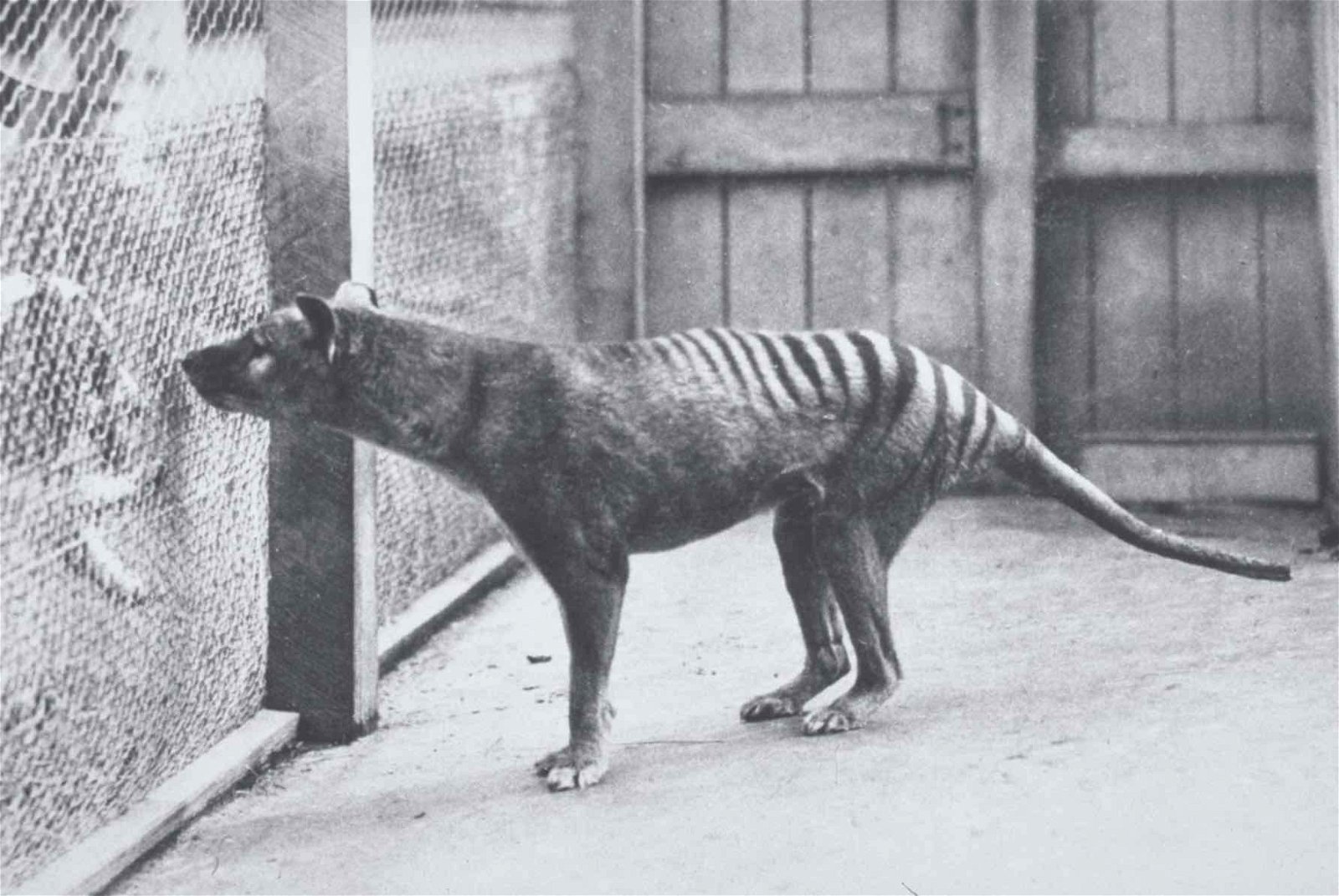Scientists are now one step closer to reviving the thylacine, thanks to key advances in genomic and reproductive technology that also provide hope for protecting endangered living marsupials.
Colossal Biosciences, a company involved in creating de-extinction technologies, says it has nearly completed reconstructing the thylacine genome, thanks in part to a serendipitous discovery that the company says helped to advance its research into reviving the enigmatic species.
Return of the Thylacine?
The thylacine, also known as the Tasmanian tiger, was a marsupial resembling a canine believed to have gone extinct in 1935 due to human overhunting. Unlike the cautionary tale presented in Jurassic Park, experts believe the thylacine could be returned to its former ecosystem with relative safety.
Two years ago, Colossal announced its “de-extinction” project aiming to revive the creature. The company also focuses on the mammoth and preserving endangered species that are not extinct.
One of the company’s latest breakthroughs on the project owes much to luck. Last year, a thylacine head preserved in ethanol was discovered hidden away in a cupboard in a Melbourne museum. Crucially, the soft tissues of the 110-year-old sample were well maintained.
Generally, long sequences of DNA break down shortly after death, yet, in this case, tissue preservation was so thorough that rare and delicate genetic material survived for over a century. Notably, the rare RNA preserved on this unique specimen varies by tissue, and a complete head presented RNA from various parts, such as the eyes and tongue.
“The thylacine samples used for our new reference genome are among the best preserved ancient specimens my team has worked with,” said Beth Shapiro, Colossal’s Chief Science Officer and the Director of the UCSC Paleogenomics Lab. “It’s rare to have a sample that allows you to push the envelope in ancient DNA methods to such an extent.”
“We’ve delivered a record-breaking ancient genome to accelerate our thylacine de-extinction project,” Shapiro said.
A Startlingly Complete Genome
Colossal says it has now achieved a thylacine gene sequence that is close to 99.9% complete. Only 45 gaps remain, and based on the pace of the sequencing effort, even those should be closed within months. Elements that are difficult to reconstruct, even in still-living species, such as centromeres and telomeres, are fully mapped. Ongoing work includes continual comparison of the genome to that of the thylacine’s living relatives. Notably, the company’s progress marks the first time an extinct species genome has ever been recovered, a task once considered impossible.
With a well-preserved thylacine head driving the progress, it was only appropriate that the team paid particular attention to the thylacine’s distinctly canid-appearing skull and jaw morphology. Comparing their developing genome to those of wolves and dogs to determine what similar sequences may produce the distinctive canid head shape, the new sequence elements have been dubbed “Thylacine Wolf Accelerated Regions” (TWAR).
To test their results, they replaced sequences of mouse DNA with small segments of thylacine DNA they hypothesized were related to certain small canid features. The mice’s mutated cranial features perfectly matched the team’s expectations, proving exactly what the specific DNA instructions were responsible for.
Producing a Living Specimen
The gene sequence is necessary to return the thylacine, but it’s only the beginning. Colossal must develop a method of producing a living creature from that genome. To achieve this, they are simultaneously pursuing an assisted reproductive technology (ART) project. The project aims to implant the closest living relative of the thylacine, the fat-tailed dunnart, with a viable thylacine embryo. No previous work had ever been done on a dunnart ART, and little had been done on marsupials in general.
The project has made significant strides towards ART, including the initial milestone of inducing ovulation in a Dunnart. This allows the company to control when an egg is available for fertilization and manipulate multiple eggs into becoming available at once. After several Dunnart eggs are fertilized, the company says they can be gene-edited into thylacines.
Another innovation came when the team fertilized single-cell embryos and cultured them for more than half of a pregnancy term using an artificial uterus. These steps go much further than any previous work on marsupial embryos.
“Not only are these major milestones for the thylacine de-extinction project, but Colossal’s advancements for improving Assisted Reproductive Technologies in marsupials can be applied across the family tree,” said Dr. Andrew Pask, a member of Colossal’s Scientific Advisory Board and the head of the Thylacine Integrated Genomic Restoration Research Laboratory at the School of BioSciences in the University of Melbourne.
“These technologies will, for example, improve the breeding capacity of critically endangered species in captive populations – such as the closely related Tasmanian devils being bred to help fight against their extinction from the devil facial tumor disease (DFTD),” Pask said.
Ryan Whalen covers science and technology for The Debrief. He holds a BA in History and a Master of Library and Information Science with a certificate in Data Science. He can be contacted at ryan@thedebrief.org, and follow him on Twitter @mdntwvlf.

